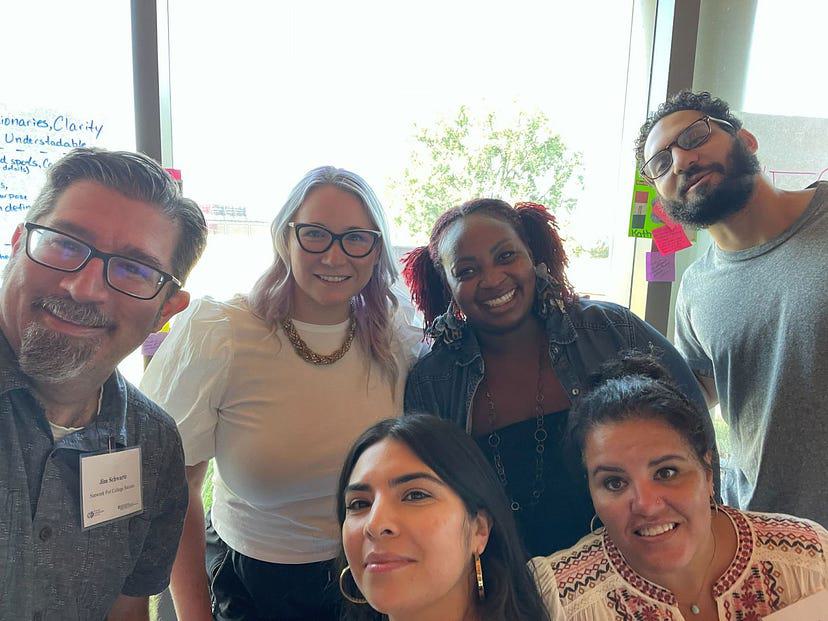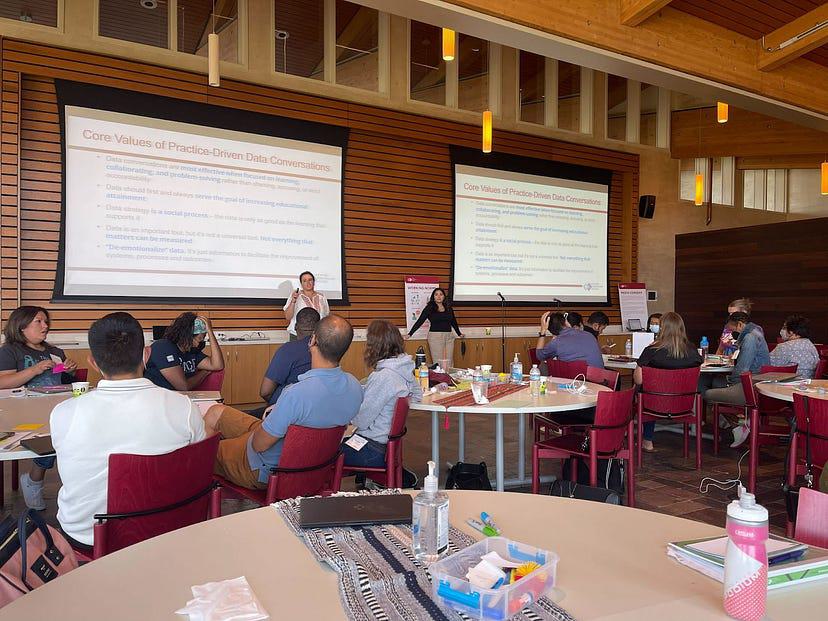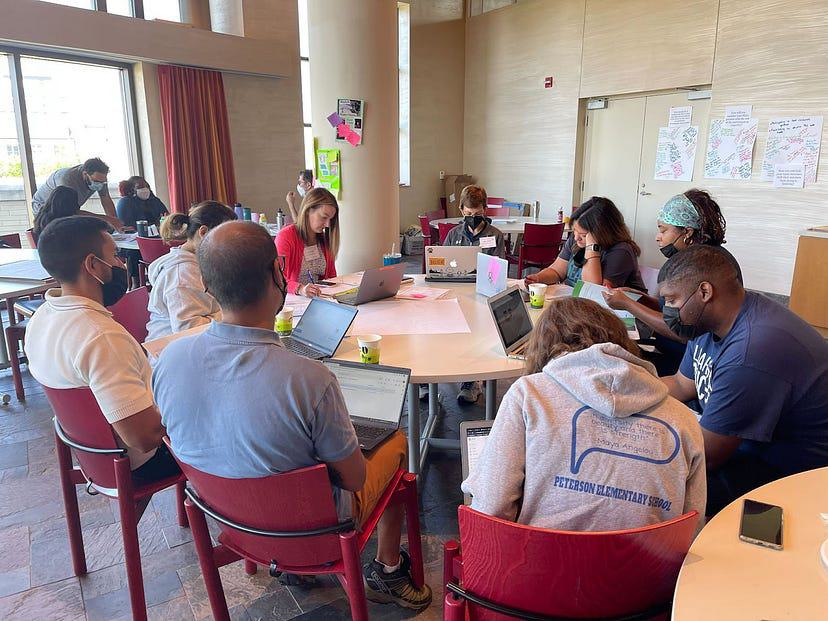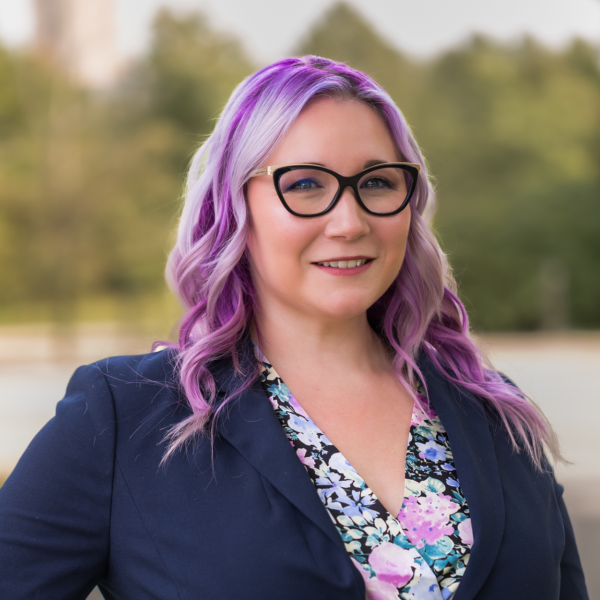Published on Oct 4, 2022
Q&A with Freshman Success Coach, Lauren Perez Pietruszka
This past August, the Network for College Success hosted its Leading PLCs Training, a workshop designed for educators and high school leaders to foster PLCs in their schools for student success.
Professional Learning Communities, or PLCs, are school teams that connect regularly, share expertise, and work collaboratively to improve their practice and the academic experiences of students, particularly their school’s least-served students. In an article by Richard Dufour, he describes a PLC as “…a grand design — a powerful new way of working together that profoundly affects the practices of schooling.” (2004)
At this year’s workshop, educators and school leaders experienced elements of effective PLCs, also known as high-functioning teams for learning. The topics of cultural competence, race, and identity and their impact on leadership were also explored.
Image

To recap the experience, we sat down with one of the facilitators.
The following interview has been lightly edited for length and clarity.
Angel: Could you tell us about yourself, your role at the Network for College Success (NCS), and your role as a facilitator at the Leading Professional Learning Communities (PLCs) this summer?
Lauren: I’m Lauren Perez Pietruszka, Freshman Success Coach and co-lead of our Freshman Success Team at NCS. I’m a former 9th-grade literacy and AVID teacher, a former 9th-grade team lead, and I was actually coached by NCS back when I was teaching. I’ve gone through the Leading PLCs training myself as well as NCS’s Equity-Based Leadership training, and I’ve been on the Leading PLCs facilitation team at NCS for about three years.
Angel: This was my first time engaging PLCs–learning what they are and how serve as spaces for educators to come together, reflect, collaborate, and center the experiences of our least-served students.
For leaders who may be leading or experiencing PLCs in their schools for the first time, how may they begin to think about this work and how it differentiates from your typical meeting?
Lauren: When I think about my first experiences with PLCs, I think about what I felt–connected and empowered. When we talk about a community, we’re talking about bringing people together for a mission–to transform schools into places of powerful learning that honor young people in their full brilliance. And I remember the leaders I worked with ensuring that we were all on the same page toward that mission. That feeling of being connected to something greater than myself is powerful.
When we bring PLCs together, we are explicit that their primary purpose is to learn and grow as anti-racist leaders working towards equitably improving their spaces. There are adaptive goals that require ongoing reflection and learning to shift beliefs and mindsets. If we all know why we’re in this space together, where we want to go, and what we want to reimagine, it means we can take risks and collaborate, push each other, check on each other, celebrate, and do that learning together. Starting from that point is crucial because it shifts the vibe from what people might describe as your typical meeting space.
When I’m coaching and supporting new leaders for the first time, we also engage in mirror work — examination of racial, ethnic, and cultural identities — to be able to lead teams in exploring their identities and impact on their work with each other and young people.
PLC leaders understand that mirror work is always ongoing. Personally, I continue to engage in mirror work to understand how I interact with others. In my own identity, as a mixed Puerto Rican and white woman, it means being aware of how my culture, values, and biases can manifest in how I live our norms and engage in team dynamics. Without awareness and reflection with myself and with others, I could cause harm or perpetuate unhealthy oppressive dynamics in a team space. Part of my role in coaching then is helping leaders understand that for people to collaborate and improve experiences for young people, they must know themselves and their identities and how those pieces intersect first.
I like to remind our new leaders that this takes trust and vulnerability and must be continuously built. As a leader, you are responsible for fostering and attending to those trusting bonds and dynamics so that the relationships deepen and there are conditions for the team to be creative, vulnerable, and see themselves through challenging times, especially moments where trust might be eroded.
Image

“As a leader, you are responsible for fostering and attending to those trusting bonds and dynamics so that the relationships deepen and there are conditions for the team to be creative, vulnerable, and see themselves through challenging times.”
Angel: Throughout the workshop, there was a plethora of quotes that were not just shared, but there was intentional time set to sit with them and make meaning. One quote I’m still sitting with came from bell hooks’ Breaking Insurgent Black Intellectual Life, which goes, “One of the most vital ways we can sustain ourselves is by building communities of resistance, places where we know we are not alone.”
As a coach and facilitator, how do you think about implementing these notions of resistance and sustainability with the educators you work with throughout the school year?
Lauren: Humans are hardwired for connection–we seek out community. We’re always searching for belonging…for connections. And I think the idea of community or prioritizing the collective is an act of resistance in dominant culture, which prioritizes the individual or competition at the expense of others.
We know that isolation can be demoralizing, so if we’re trying to change and transform our systems, we can only be sustained when we’re together, when we value others and the community beyond ourselves. This includes honoring people’s experiences and cultures, yet we are told to operate against that in schools. But if we bring the idea of community into our schools and our teams, we are leaning into knowing ourselves, knowing each other, and trusting in each other to move forward together. This idea of communities as “places of resistance, where we’re not alone” allows people to be vulnerable, tap into their strengths, and get to the creative reimagining. We’re trying to transform systems in ways that we haven’t experienced ourselves. That co-design takes a lot of energy and brain power, so in order to have that resilience, we have to sustain ourselves in community with others.
If I feel psychologically safe, have trust, and connect authentically to others, then I’m experiencing community. Then I can increase my skills and strategies to strengthen that community holistically. NCS supports educators to disrupt the status quo, show up as their whole selves, and support young people in community. In order to do so, we must be able to name these things ourselves first.
Angel: You mentioned this notion of trust building. A component of the Leading PLCs workshop that I appreciated was this consistent re-visiting of community agreements, also known as norms. Throughout the workshop, I gained a better understanding of how norms could build a necessary level of trust, safety, and accountability, allowing us to show up and do our best work.
In your experience, what is a common misconception of norms and the process behind building them? And how can you guide one back to the purpose behind the role norms play in these spaces?
Lauren: I think norms are often just taken for granted. They exist in a community whether or not they’re written down or named. When you see a group of people together, you see their norms in action. Oftentimes they are inherited, but they are not internalized.
When we’re building norms, leaders sometimes think about worst-case scenarios, or they create norms that are in response to a particular team member or situation. But they end up with a “let’s not do this thing.” Whereas norms are actually opportunities for us to engage, connect, and collaborate. Ultimately, we want them to be framed as positive guidelines for how to collaborate as a team. Educators are pretty good about doing this with young people in classrooms, so we want to take that same idea when engaging in an adult learning community. Writing down the norms, saying the norms, and re-engaging with the norms all help to foster healthy, productive connections and help give guidelines for when things become challenging.
During difficult conversations–when dynamics shift and conflict arises–norms help us ensure that the conflict is healthy and productive so we don’t get stuck. So when a team notices unhealthy or unproductive conflict, or if there’s no conflict at all, that tells us something about our team culture and how we’re enacting our norms. It’s then an excellent opportunity to re-visit how we engage and uphold these norms and for the team to reflect individually and collectively. We’re striving to be in community for a shared purpose, so let’s be transparent and calibrate with each other so that we can get to those healthy, productive routines that lead to school transformation and equitable outcomes for our young people.
Image

“We’re trying to transform systems in ways that we haven’t experienced ourselves. That co-design takes a lot of energy and brain power, so in order to have that resilience, we have to sustain ourselves in community with others.”
